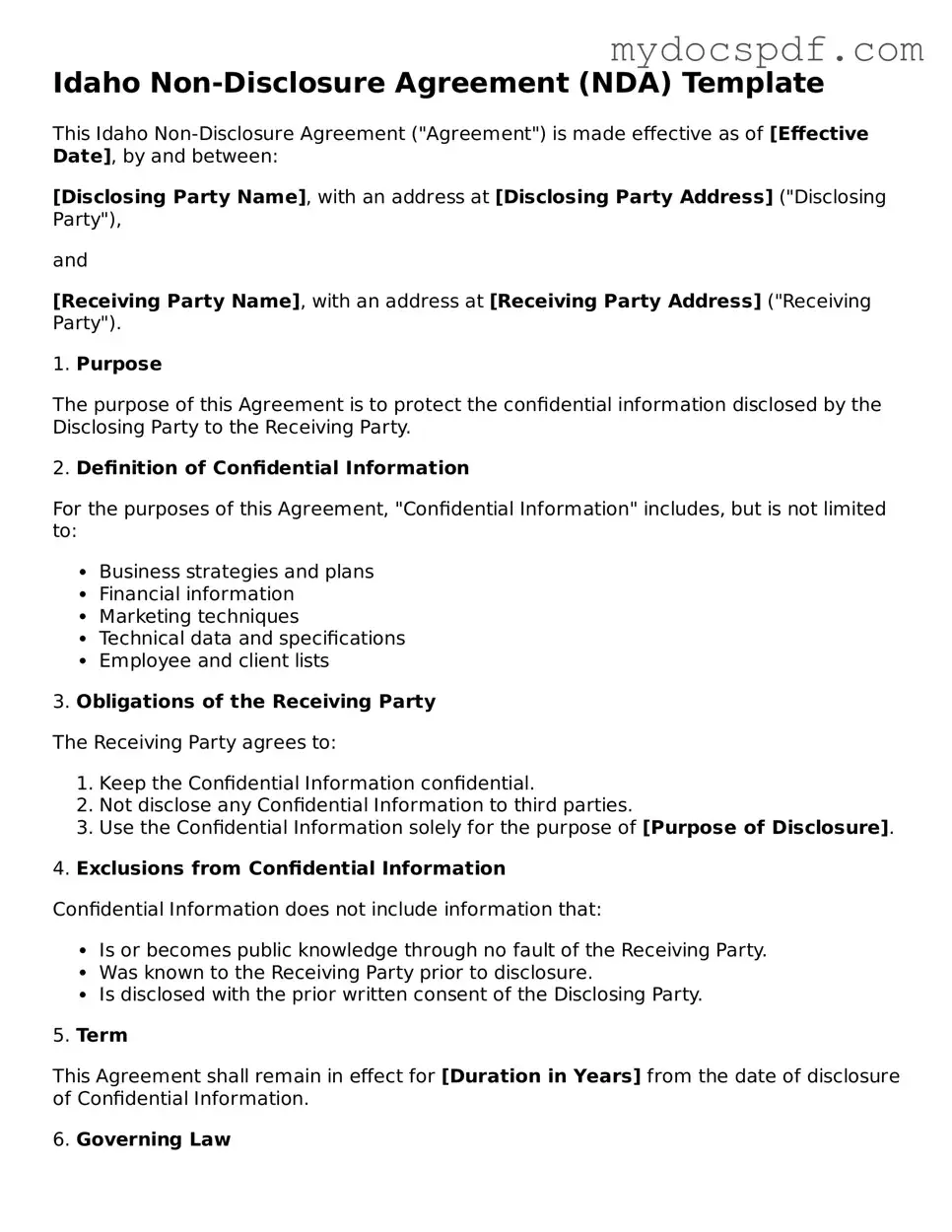Idaho Non-Disclosure Agreement (NDA) Template
This Idaho Non-Disclosure Agreement ("Agreement") is made effective as of [Effective Date], by and between:
[Disclosing Party Name], with an address at [Disclosing Party Address] ("Disclosing Party"),
and
[Receiving Party Name], with an address at [Receiving Party Address] ("Receiving Party").
1. Purpose
The purpose of this Agreement is to protect the confidential information disclosed by the Disclosing Party to the Receiving Party.
2. Definition of Confidential Information
For the purposes of this Agreement, "Confidential Information" includes, but is not limited to:
- Business strategies and plans
- Financial information
- Marketing techniques
- Technical data and specifications
- Employee and client lists
3. Obligations of the Receiving Party
The Receiving Party agrees to:
- Keep the Confidential Information confidential.
- Not disclose any Confidential Information to third parties.
- Use the Confidential Information solely for the purpose of [Purpose of Disclosure].
4. Exclusions from Confidential Information
Confidential Information does not include information that:
- Is or becomes public knowledge through no fault of the Receiving Party.
- Was known to the Receiving Party prior to disclosure.
- Is disclosed with the prior written consent of the Disclosing Party.
5. Term
This Agreement shall remain in effect for [Duration in Years] from the date of disclosure of Confidential Information.
6. Governing Law
This Agreement shall be governed by the laws of the State of Idaho.
IN WITNESS WHEREOF, the parties have executed this Non-Disclosure Agreement as of the date first above written.
Disclosing Party:
_____________________________
Signature
Name: [Name of Authorized Signatory]
Title: [Title of Authorized Signatory]
Receiving Party:
_____________________________
Signature
Name: [Name of Authorized Signatory]
Title: [Title of Authorized Signatory]
